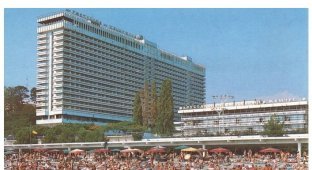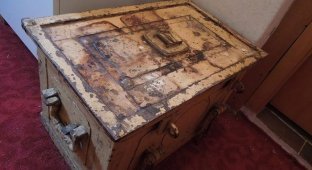A logical question: how the provincial Soviet town of Kaliningrad, with its corresponding architecture, ended up in place of the pearl of Eastern Europe, has a very direct and clear answer. Formulate it yourself, and we will give you a few quotes from primary sources.

Manchester Guardian, 28 August 1944: “Royal Air Force Lancaster bombers flew 2,000 miles to carry out the first raid on Königsberg, the capital of East Prussia, now the most important supply port for the Germans, 100 miles away. to the east they are fighting against the Red Army. The bombers were in flight for 10 hours. Their cargo included new flame-throwing incendiary bombs. The raid was limited to 9 and a half minutes.
After that, there appeared what one of the pilots described as the largest fire he had ever seen - streams of flame that were visible for 250 miles. The port was protected by numerous anti-aircraft batteries, but after the raid ended, these defensive measures were irregular and ineffective. Only five bombers did not return."

RAF Press Office: “It was a remarkable success to carry a large bomb load close to the Russian front without refueling. The Lancasters attacked well below their normal operating altitude.
The raid passed so quickly that resistance was quickly broken. The weather was clear, and all crew members were unanimous that it was a very powerful bombardment. Königsberg, a large port and industrial city with 370 thousand inhabitants, remained unaffected by air raids compared to other cities.
With its excellent railway connections and large docks, in the current developments in Eastern Europe, no city is more significant for the Germans than Königsberg.
And in times of peace, Koenigsberg was as important to the enemy as Bristol was to us. The docks are connected to the Baltic Sea by a twenty-mile canal, which was recently mined by the British Air Force. In addition, there is a railway connection with Berlin, Poland and to the northeast to the Russian front.”

Michael Wieck, who survived this hell: “Only three nights passed, and on August 29 we were driven into the basement again. It was an indescribable hell. There was no end to the raids and explosions... This time, the entire city center - from the Northern Station to the Main Station - was systematically and conscientiously littered with canisters of napalm, which were first used here, and explosive and incendiary bombs of various designs. As a result, the entire center burst into flames almost simultaneously. The sharp rise in temperature and the instant outbreak of a huge fire left the civilian population living in the narrow streets no chance of salvation. People burned near houses and in basements... Everyone knows about the bombing of Dresden; it was often described in horrific detail. The same thing happened to Koenigsberg six months earlier...
It was impossible to enter the city for about three days. And after the fires stopped, the earth and stone remained hot and cooled slowly. Black ruins with empty window openings resembled skulls.
Funeral teams collected the charred bodies of those who died in the street and the twisted bodies of those who were suffocated by smoke in the basement. Many thousands died, and each had their own fate. As it turned out later, there were also Jews here who lived in mixed marriages. Who can tell about the last minutes of the life of the unfortunate? Is it even possible to imagine them? At what temperature does a person lose consciousness? Everyone was shocked by the discovery that the war also had such an unimaginable dimension... The leadership of the Anglo-American troops should have known that civilians, women and children suffered from such raids, and the course of military operations hardly changed. These acts of revenge were neither heroic nor reasonable and were indicative of an immoral mindset similar to that of the Nazis. Hitler’s war machine could not be stopped in this way - on the contrary, such actions led to fierce and desperate resistance.”

“Ostarbeiter” Yuri Khorzhempa: “The first bombing was still tolerable. Lasted about ten minutes. But the second one was already a living hell, which seemed to never end. The British were the first to use napalm charges. Firefighters tried to extinguish this sea of fire, but nothing came of it. I can still see it before my eyes: half-naked people rushing among the flames, and more and more bombs are falling from the sky howling...
In the morning the ground shone with countless strips of foil, with the help of which the British confused the radars. The center of Königsberg burned for several days. It was impossible to get there due to the unbearable heat. When he was sleeping, I and other “Ostarbeiters” were ordered to collect the corpses. There was a terrible stench. And what condition were the bodies in... We put the remains on carts and took them out of town, where they buried them in mass graves.
The result of the bombings: at least five thousand people were killed, about two hundred thousand were left homeless. No military installations were damaged. However, not because the pilots missed. Allegedly, it was an act of retaliation and intimidation. That’s why they bombed the densely built-up, densely populated center...”





















































































































